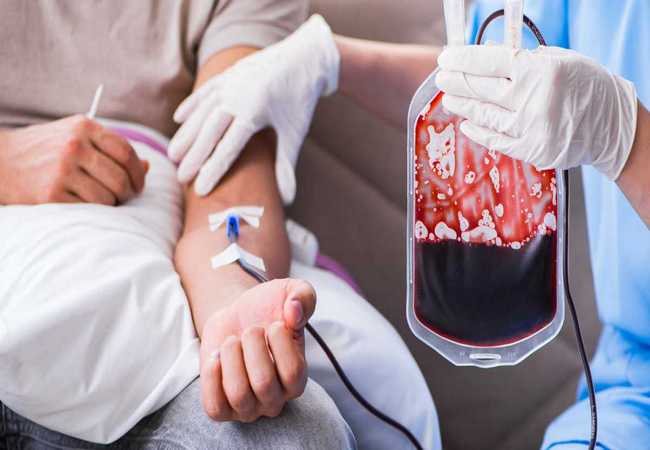Medical and Nursing Management of Anemia or Anaemia
Definition of Anemia or Anaemia :
Anemia is defined as the reduction in the number and quality of circulating red blood cells when the hemoglobin content is below the normal level for particular age, resulting in decreased oxygen carrying capacity.
Anemia is decreased in the total amount of red blood cells (RBCs) or hemoglobin in the blood, or a lowered ability of the blood to carry oxygen.
Normal Hb Level:
- Male- 13-18 gm /dl,
- Female -11.5-1 6.5 gm / dl,
- Children -16- 19 gm/ dl,
- At birth- 18-20 gm/ dl.

Management of Anemia or Anaemia:
Medical Management of anemia depends upon the specific cause of the condition.
Anemia due to excessive blood loss:
- Acute blood loss needs immediate control of bleeding,
- Restore blood volume by IV infusion,
- Blood transfusion along with treatment of shock,
- Treat the cause of bleeding,
- Chronic blood loss usually produces iron deficiency anemia,
- The exact cause should be detected,
- Treatment should be planned according to the specific cause.
Anemia due to excessive blood cell destruction:
- Requires the identification and treatment of specific hemolytic disorder.
Anemia due to depressed blood cell formation:
- Specific deficiency of iron, folic acid, vitamin B12, etc. should be detected and treatment to be done with replacement therapy of specific nutrients.
- In case of bone marrow depressions, the specific cause (like drugs, toxins) to be identified and treatment to be performed by removal of offending agents.
Nursing Management of Anemia or Anaemia:
1. Nursing assessment is the comer stone of nursing interventions; it is done by obtaining details history to detect potential causes of the condition. Important aspects of assessment are-
History of present complaints-
- Past illness,
- Chronic diseases,
- Presence of infections,
- Worm infestations,
- Poisons,
- Exposure to medications,
- Dietary habits,
- Behavioral problems like pica, and
- History of familial diseases.
2. Physical examination to be done to exclude the presence of clinical features like pallor of skin and mucous membrane with other signs and symptoms related to anemia.
3. Assessment of anthropometric data (height, weight, MUAC, skin fold thickness, head and chest circumference).
4. Assessment of vital signs.
5. Review of laboratory investigations are important to identify the problems and to implement the care.
More questions related to this article:
- What is anemia?
- Define anaemia.
- What do you mean by anaemia?
- State the medical management of anemia.
- Write down the medical management of anaemia.
- How will you manage a case of anaemia?
- Write down the nursing management of anemia.
- Discuss about medical and management of anaemia guidelines.

Maria Khatun Mona is a Founder and Editor of Nursing Exercise Blog. She is a Nursing and Midwifery Expert. Currently she is working as a Registered Nurse at Evercare Hospital, Dhaka, Bangladesh. She has great passion in writing different articles on Nursing and Midwifery. Mail her at “maria.mona023@gmail.com”
